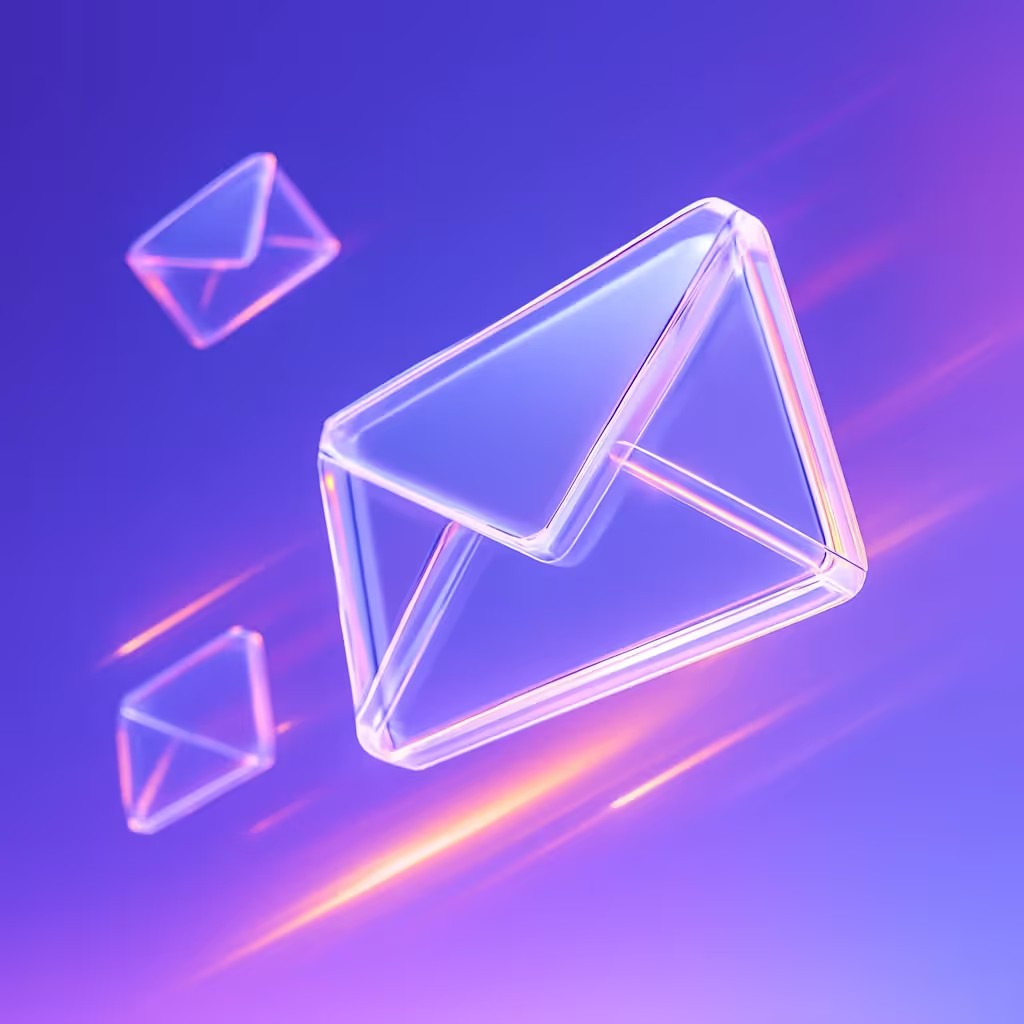I’m not going to tell you that 48% of salespeople never follow up because that statistic is fake.
What I’m going to tell you, however, is that I receive enough cold emails to know that most of them aren’t followed up on. What I’m also going to tell you is that we at Overloop help hundreds of customers write their follow-up email sequences, because most of the time, they’re pretty bad.
Is following up always worth it, though? Based on our experience and data, 70% of responses come from the 2nd to 4th email of the sequence. So without a doubt, I’d say yes.
While there’s no “one size fits all” model to writing a cold email sequence, there are a few rules you can rely on to get things moving.
How to pick and set up a follow-up email sequence?
Here's what your workflow should look like:
Step 1: Determine the goal of the campaign
Step 2: Research your prospect
Step 3: Pick a sequence type and customize it
Step 4: Launch the campaign
Step 5: Measure your results
The minimum sequence
This is the AK-47 of email sequences. Easy to set up, efficient in most cases, and scalable.
It allowed me to land four guest posts in less than two weeks (a 22% success rate).
Every cold email sequence should include at least these three steps:
1) An opening cold email
Without going too deep into details about how to write a cold email, keep it short and include the following elements:
-
- Grab the attention
-
- Lay out why you’re reaching out to them
-
- State what’s in it for them
-
- Explain why they should trust you
- Call to action
Keep a conversational tone, personalize your content, add value and make it clear what it is you want.
Also, it’s always good to warm up a cold email recipient with a personalized LinkedIn contact request.
2) A gentle but firm reminder (2-3 days after the initial email)
Emails tend to be overlooked; your prospect might be busy, not in a good mood to answer, or simply out of office for a few days. You’d be amazed at the power of a simple reminder.
Don’t repeat yourself, though. Follow up in the same thread and simply ask if they saw your previous email, if they got a chance to think about your offer, etc.
3) A break-up email (4-5 days after the previous email)
I’m about to let you in on a secret.
Seriously, this is the formula for a break-up email that gets a response.
You know how no one wants to miss out, and most people want to help. And also how some people simply need a second reminder?
There’s a single sentence that encapsulates all that. Here it is:
“What could have changed your mind?”
Try to use that as your subject line (or as part of your subject line) and ask in your body text if they can point you to a couple things that might have swayed their decision.
Why is so powerful? It makes the reader think about your offer and the reasons they wouldn’t give you an answer. And suddenly, when they type those out, they don’t seem so compelling anymore.
The business sequence
Depending on the importance of the decision, the risk, and the reputation of the company, some follow-up sequences may require more than a few emails and demand more persuasion.
This sequence involves more work but also drives much more value. It helped us recruit our first 175 customers.
It runs over a two-week period and looks something like this:
- Opening cold email
- Gentle but firm reminder (2-3 days after the initial email)
- Value bringer #1 (3-4 days after the previous email)
- Value bringer #2 (3-4 days after the previous email)
- Break-up email (4-5 days after the previous email)
Now, the question is…
…how do you bring undeniable value to cold emails?
There are five main ways to make your emails incredibly valuable and help your prospect take an action that will move the sales process forward.
1. Case studies
Case studies are powerful because they show how one of your customers solved a specific problem successfully and with measurable results. Neil Patel, co-founder of KISSmetrics and Crazy Egg, managed to increase his sales by 70% by including case studies in his emails!
They allow you to grab the attention, demonstrate value, show differentiation, and mitigate the risks.
2. Success stories
Success stories are about summarizing the successful experience of a customer with your company, just enough to pique interest. (As opposed to case studies, which focus on the methods implemented to make that experience successful.)
Objections are stories; they’re a projection of what might go wrong or might not work. As Shawn Callahan puts it: “You can’t beat a story with fact, you can only beat it with a better story.”
If you can anticipate the reasons for your prospect’s reluctance, bring them stories that deal with those reasons. Keep in mind that facts alone aren’t generally enough when handling objections.
3. Testimonials
This time, you’re not the one telling the story—your satisfied customer is. And that can have a tremendous impact.
According to Groove, testimonials placed on their homepage, guest post landing pages, and email marketing have helped increase conversions by 15%.
They allow you to build trust, sell without selling, and overcome skepticism.
4. Referrals
According to Joanne Black, referrals can help close new customers/clients at least 50% of the time! That means more new business with fewer leads.
The best referrals start with an introduction by someone your prospect knows, trusts and respects.
Referrals allow you to bypass the gatekeeper, get you ahead of the competition, earn trust and credibility, and maybe win an introduction from them to another prospect.
5. Relevant content
If you don’t have any customer data to share—or none that would be relevant to your prospect—you can still offer value by including a piece of valuable content.
It’s easy and it provides you with an opportunity to prove you took the time to understand a prospect’s challenge and find something that could help them solve it without necessarily including your product in the process.
Longer cycles
Whereas small transactions may lead to fast decisions, big or complex transactions may need you to establish extra credibility and persistence in order for your prospect to wrap their head around the idea of responding to your messages.
Keep in mind that these longer sequences must be integrated in multichannel approaches that will allow you to build a more meaningful relationship.
You can’t be an expert in all outreach methods but you also can’t stick to only one way of reaching out. Sales are about creating relationships and the more natural you are about it, the more successful you’ll be in winning new clients.
Here’s the approach Phill Keene implements at Costello; it uses six different methods over the course of a month before going into nurturing phase. It might seem aggressive -it is called the Crazy Ex Sequence- but hey, it works.
Adapt and execute
Find out as much as possible about your prospect, know what you’re expecting from them, and tailor a sequence based on that!



